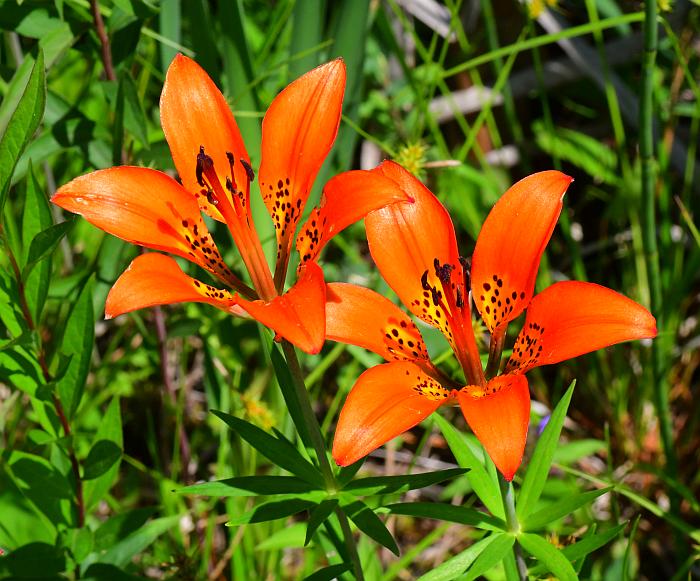Lilium philadelphicum L.
Wood Lily

Native
CC = 10
CW = 3
MOC = 4
SRank = S1
© SRTurner
Lilium philadelphicum L.Wood Lily | |
 |
Native CC = 10 CW = 3 MOC = 4 SRank = S1 |
© SRTurner |
|
Family - Liliaceae Habit - Perennial forb, with white bulbs covered with thick scales, lacking the odor of onion or garlic. Stem - Aerial stems to 80 cm, green, glabrous, sometimes glaucous.
Leaves - Alternate, whorled on at least the uppermost node(s), simple. Blades 3-10 cm long, linear to narrowly elliptic or narrowly lanceolate, tapered at both ends, glabrous, sometimes with minute, rounded papillae along the margins and midvein.
Inflorescence - Whorls of 2-5 flowers, often reduced to a single flower, the flowers borne erect.
Flower - Perianth bell-shaped, the 3 sepals and 3 petals ascending to spreading near the tips, narrowed to a stalklike base, red-orange with brown spots on the interior. Stamens 6, the anthers 5-15 mm long. Style 1, with a shallowly 3-lobed stigma. Ovary superior, with 3 locules, each with numerous ovules.
Fruits - Capsules 4-7 cm long. Flowering - June - July. Habitat - Forests, prairies, cemeteries, roadsides. Origin - Native to the U.S. Lookalikes - None. Other info. - This species is a real treat, but rare in Missouri, currently known only in two counties in the far north of the state. Although there are very old collections from the St. Louis area, the species is probably extirpated from that region. The plant is far more common to our north. It is easily recognized by the upright posture of the flowers and the red-orange, brown-spotted perianth. Photographs taken along a roadside in Chippewa County, MI, 7-7-2023 (SRTurner). |